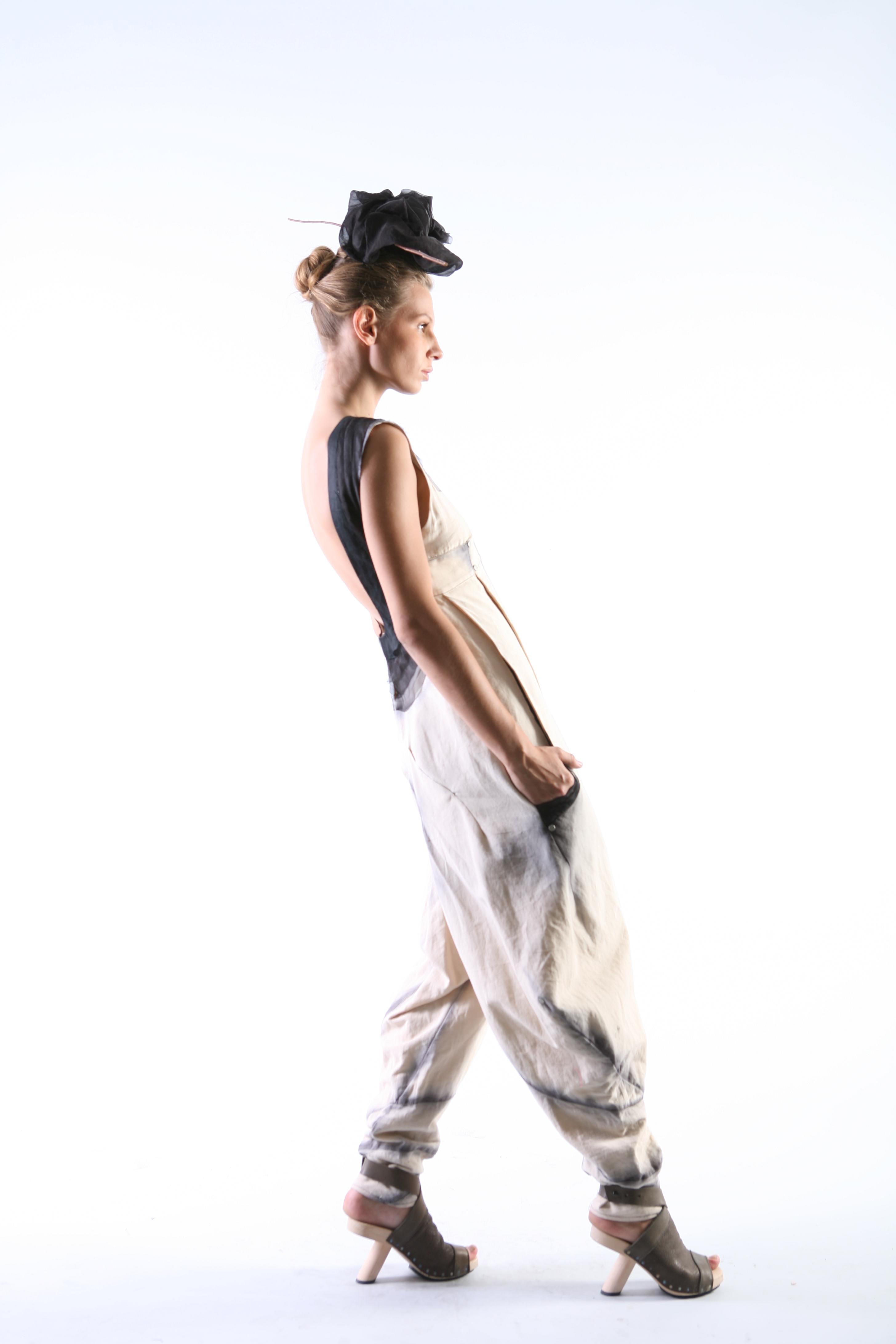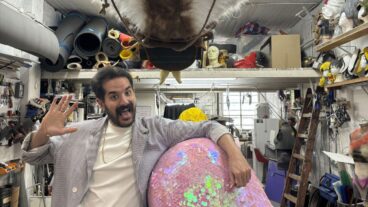Where do Donna Karan, Roberto Cavalli and Diane von Furstenberg go to find new fashion talent? Israel’s Shenkar College of course.

Which fashion school spawned Alber Elbaz of Lanvin and Kobi Halperin of Elie Tahari? Where did hot Israeli designers Ronen Chen, Mirit Weinstock and Naama Bezalel get their training? And which fashion school do Donna Karan, Roberto Cavalli and Diane von Furstenberg visit to find new talent?
The answer to all three questions is the fashion design department of Shenkar College of Engineering and Design, founded in 1970 in the Tel Aviv suburb of Ramat Gan.
Shenkar-trained designers have long enjoyed a world-class reputation, winning prestigious international competitions and working in famous design houses across the globe. In December, Shenkar took the #16 spot on Fashionista‘s list of top 50 fashion schools in the world.
This achievement is all the more impressive for the fact that Israel is not a world fashion center like Paris, Tokyo, London or New York, points out Leah Peretz, head of the department for the past 14 years. And because it’s such a small country, its stores do not carry the full range of fabrics and trimmings available to fashion designers in those major cities.
However, under the guidance of Peretz, Shenkar’s students have learned to turn these negatives into positives.
“Our students are forced to be inventive,” Peretz tells ISRAEL21c. They tailor their own materials and use the expertise of the college’s engineering department to learn how to make plastic accessories. Now that manufacturing has moved offshore, they also learn the “language” of special software that allows them to detail for foreign workers how each garment should be constructed.
Prospective students need not have a developed portfolio to win a coveted spot in the four-year program.

“We are looking for talent, but not necessarily experience in fashion,” Peretz explains. “We even prefer those who want to do fashion but have no idea how to sew or cut, because then they are a ‘tabula rasa’ and don’t have any preconceptions.”
Cultural melting pot
Married to diplomat Yair Recanati, Peretz has served as a cultural attaché for Israel and strongly emphasizes diversity. Of the 220 current fashion design students, 20 percent are male, five are Arabs and many are of Russian descent. There are students from both secular and religious backgrounds as well.
“It’s like a melting pot, and that is quite unique for a design school,” she says. “We make a point to have students from different cultures, and we encourage them to express their worlds.”
Last spring, 17 Shenkar students participated in an Internet-based cultural exchange program with 17 students at Japan’s Bunka Fashion College, another Fashionista Top 50 school. This year, Peretz invited African refugee women living in Tel Aviv to expose her students to their traditional clothing as inspiration for collections of ethnic designs.
Peretz was an art historian at Bezalel Academy of Arts and Design in Jerusalem when she was invited to teach a course on the history of design at Shenkar. After accepting an offer to direct the department, she broadened the curriculum dramatically.
“Shenkar was very good at teaching the technical know-how and I still think it’s very important to have a solid technical background,” she says. “But I made enormous changes to make the program interdisciplinary and very thorough.”
Peretz invites prominent guest lecturers – such as Donna Karan — to teach master classes, and offers elective courses in fashion journalism, advertising, production, photography, styling, drawing, sculpture, product design, embroidery and knitting.
Shenkar students learn the basics of children’s clothes, underwear, swimwear, menswear, eveningwear and bridal wear, casual wear, extreme sportswear, knitwear, bags, shoes, jeans and tailored clothing. A fashion and textile archive allows them to handle and inspect historical garments.
“There is no other such archive in all the Middle East, with hundreds and hundreds of dresses and shoes, bags and scarves from the 17th to 20th centuries,” says Peretz. Many of the donated items come from the Fashion Institute of Technology in New York.
Jobs at top fashion houses
Some students nab summer positions abroad at places including Elie Tahari in the United States, Stuart Weitzman’s shoe design studio in Spain, Marks and Spencer in London, Lanvin in Paris and Cavalli in Italy. Von Furstenberg accepts four Shenkar interns over the course of every academic year, and selects one exceptional graduate to come and work for her.
Back in 2005, Karan took Shenkar design student Avshalom Gur under her wing. He went on to win the British Fashion Council’s New Generation award for three consecutive seasons, started his own Avsh Alom Gur label and relaunched the fashion house of 1960s cult designer Ossie Clark in 2007.
London Times fashion editor Lisa Armstrong and Tahari’s Halperin are among the prominent group of experts and former students who come to Shenkar from several countries for the all-important “crits” (critiques) of final-year projects. Many of the students receive job offers on the basis of this work.
A Hong Kong-New York design firm recruited seven 2010 Shenkar grads to exclusively staff a new studio, and two more will be hired at the end of this school year.
“In many other schools, when you graduate with a B.A. you go and do internships and only after that introduce yourself for employment,” says Peretz. “But our students are recruited immediately because they are full professionals when they graduate.”
Peretz says Shenkar students are trained with a universal outlook. “Fashion is totally global. In the 1950s and 1960s there was something unique here in Israel. Now, what happens in Paris, Milan and New York will happen here, too.”
And what will that be? “I’m not a fashion designer,” she demurs. “I leave it to the professionals.”













